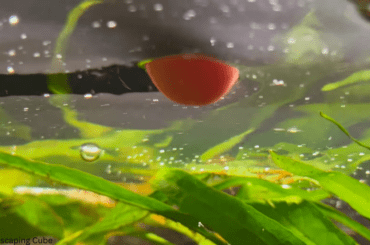Have you ever wondered how much filtration you need in a fish tank? There are a lot of myths and misconceptions out there regarding the fish tank filter flow rate.
When getting into the aquarium filter rate we’ve got a couple of different things to consider. The first one is that we want to keep our fish happy and healthy. So we want a filtration that’s going to keep our aquarium ecosystem healthy. The second thing is we want to balance the cost. We don’t want to spend a lot more money than what’s necessary.
So let’s talk about how we can balance those two things and select the correct filter flow rate for the aquarium. In order to understand how much filtration we need, we have to look at three different aspects of filtration.
- Chemical filtration– The ability of filtration to pull certain chemicals out of the water or at least neutralize them.
- Mechanical filtration– The ability of a filter to pull out the particulate matter (suspended debris) in your water column, making the water appear cleaner and clearer
- Biological filtration– The ability of a filter to house bacteria that allow the nitrification cycle to happen in your aquarium, going from ammonia to nitrite to nitrate.
Aquarium Filter Turnover Rate
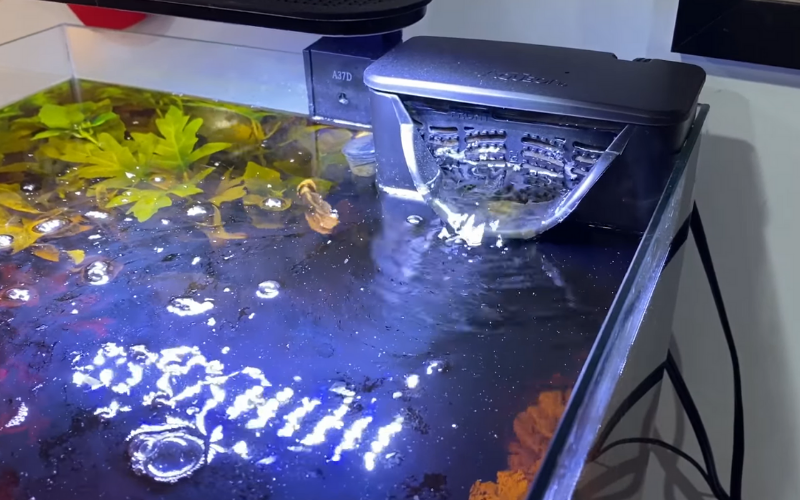
Aquarium filter turnover rate means the number of times that the filter turns over the whole tank per hour. Aquarium filter turnover rate is the main factor which determines the mechanical filtration power of the filter.
The standard aquarium filter turnover rate for most aquariums is around 4 to 5 times per hour. In other words, all the aquarium water should pass through the filter at least 4 times per hour.
So the throughput is going to make a big difference in terms of pulling out the particulate matter. The more water you suck through the filter, the greater the opportunity for that particulate matter to get caught up in the filter media and not wind up back in the tank.
So you should decide the required fish tank flow rate to get the standard filter turnover rate for the aquarium.
Fish tank filter flow rate
The fish tank filter flow rate is measured with Gallons per hour (GPH) and it depends on the aquarium filter turnover rate. The aquarium filter flow rate is equal to the tank volume into the tank turnover rate.
If you’ve got a 20-gallon tank, to get an aquarium filter turnover rate of 5, you will need a filter flow rate somewhere around the (100GPH) hundred gallons per hour range. In most cases, the filter pump flow rate determines the water flow rate for the filter.
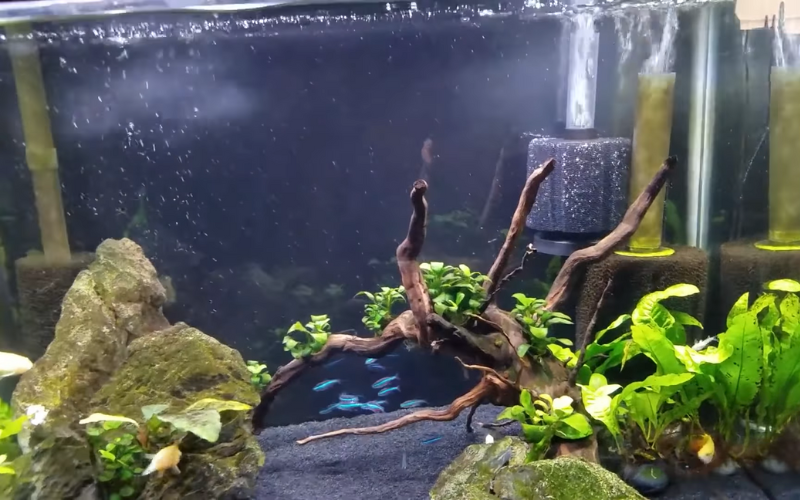
But there are some other factors that contribute to cloudy water, and this is where the debate really comes in terms of water clarity.
Bigger filters pull more water and pull out more particulate matter from the aquarium water. But the other thing you have to consider is the filter media inside that filter. If the media is very porous, it’s going to allow more particulate matter to pass through the filter.
Can you have too much filtration in an aquarium?
Too much filtration is not recommended for aquariums. There are two main disadvantages of overpowered filters. The first one is the cost and high power consumption. The most important factor is the fish.
We want to make sure that our filters and the flow that those filters are creating are best suited for the fish. For example, some long-thinned fish varieties like Bettas, Fancy guppies, Angelfish, Discus, or goldfish don’t like really high-flow aquariums.
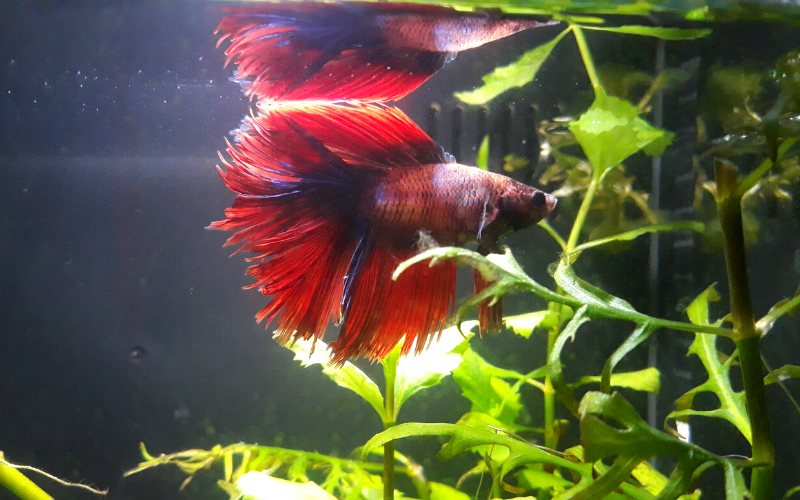
So if you’ve got an overpowered fish tank filter that creates a lot of flow, it can stress your fish, it can prevent them from eating and it will eventually prevent them from swimming around. So they will usually not live quite as long.
On the flip side, there are fish varieties that benefit from a higher flow. Generally, fish that are found in the river systems are interested in a little bit of water flow. They might actually benefit from more flow.
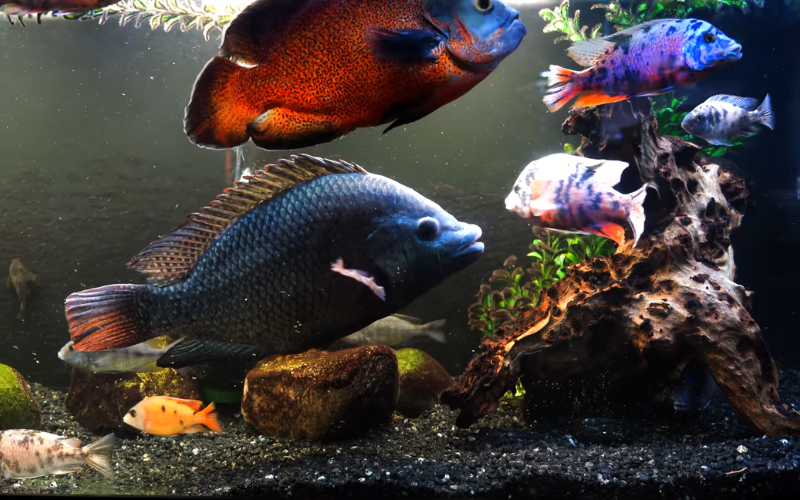
However, if you’ve got more water flow, you’re sucking in more stuff, and more stuff is going to get trapped in your filter media. Therefore your water is going to appear cleaner. So you need to adjust the filter flow rate accordingly.
Is it OK to have 2 filters in a fish tank?
Yes, having two filters in an aquarium is OK. Nevertheless, there are a few things you should think about before you do it.

Redundant filtering is a term used to describe having a second filter. The theory holds that a second filter exists but does very little work. But it’s there as a safety net. This means that, in the event that your primary filter fails or malfunctions, the second filter will take over.
As well as you can use two aquarium filters to provide enough filtration for the tanks that need a low flow rate. There you can use multiple aquarium filters like sponge filters as the combination provide the required turnover rate for the aquarium.
Why does my fish tank get dirty so fast?
If you’ve used filter pads with very small porous, you’re going to trap more particulate matter. But once that filter media gets saturated with particulate matter, it isn’t going to be able to trap additional particulate matter. All the detritus just pass and wind up back in the tank.
Whether it’s a sponge filter or a hang-on-the-back filter, or a small canister filter. In every case, you begin to see changes in the way your tank looks when the filter media is saturated with detritus, fish waste, and fish food floating around in the tank. So then you need to clean your aquarium filter frequently.
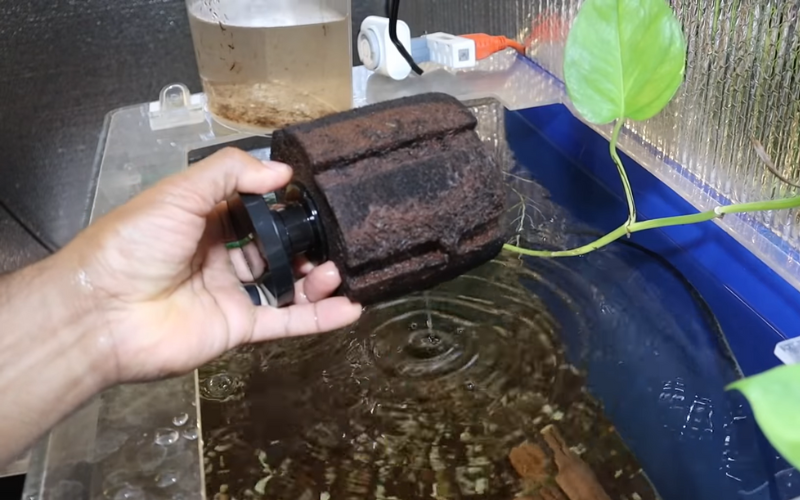
As a solution, you can increase the filter box volume with more filter media or use a second filter (redundant filter). Then it will able to hold more detritus than usual. Again, we should still keep in mind the fish we have in the tank, making sure that the flow is not too strong for them
Conclusion
So as a bottom line, try to maintain the optimum filtration in your aquarium and never use overpowered filters. We’ve compared just about every type of filter and you can compare them to find out the appropriate filter for your aquarium.
Resources: Primetime Aquatics




